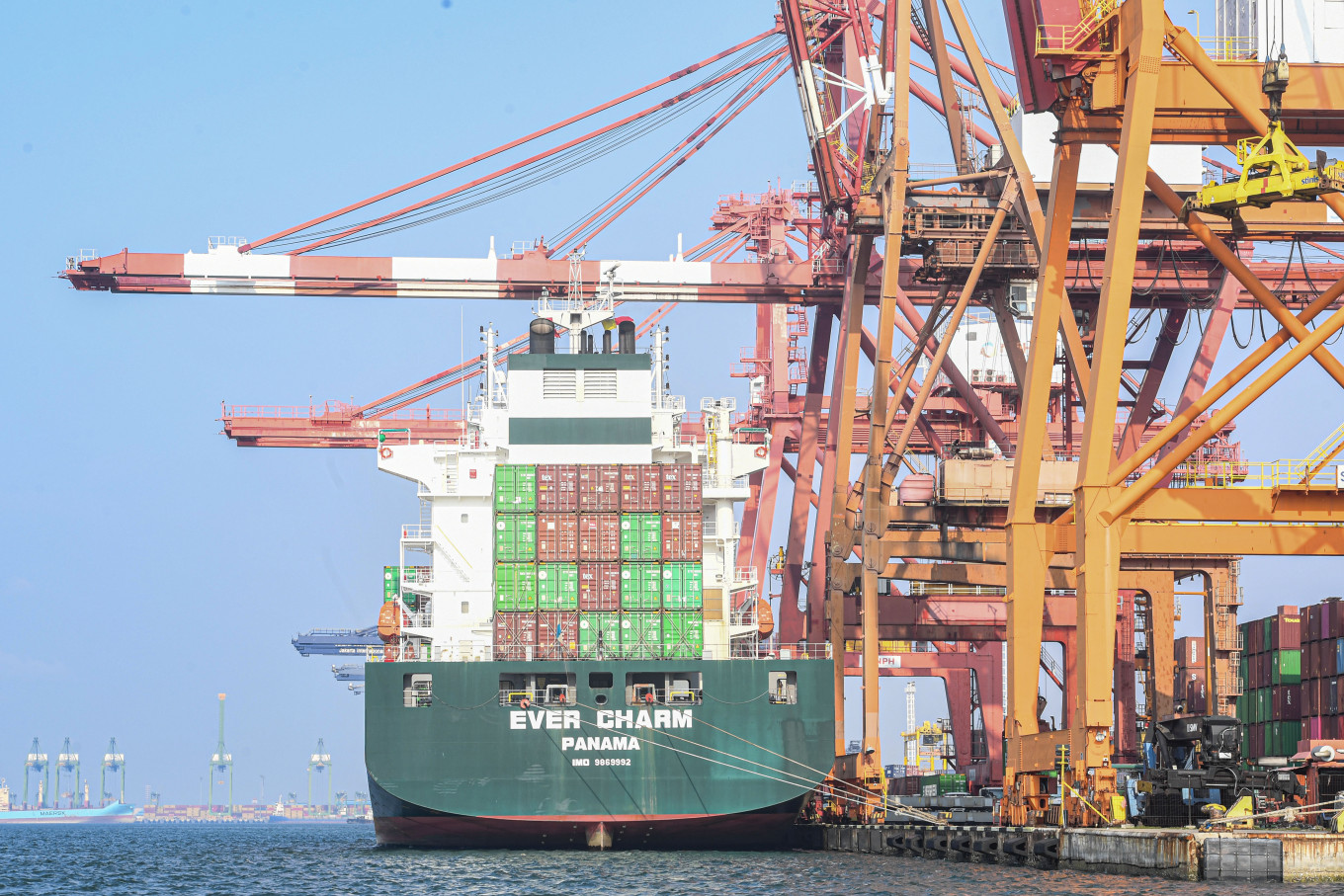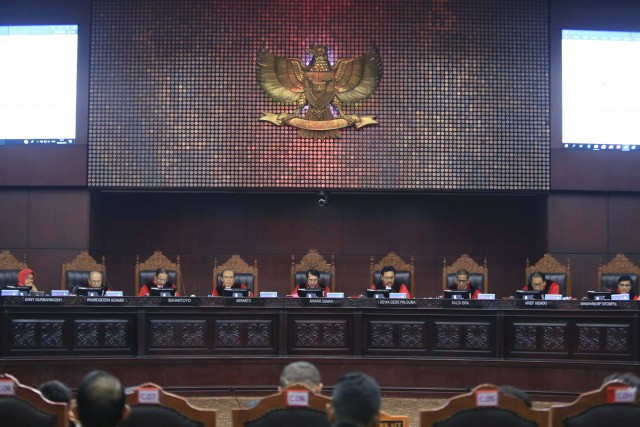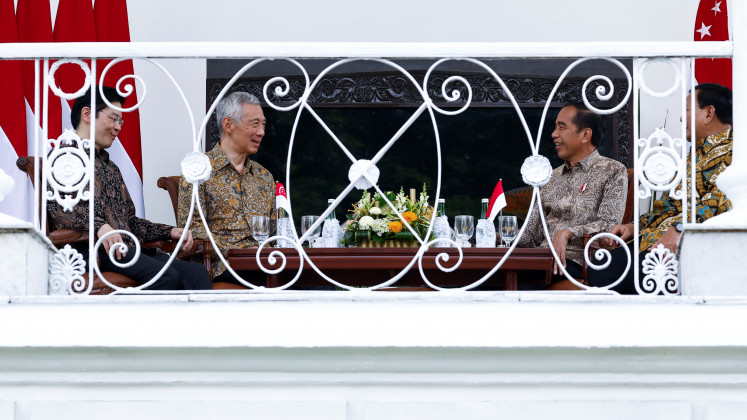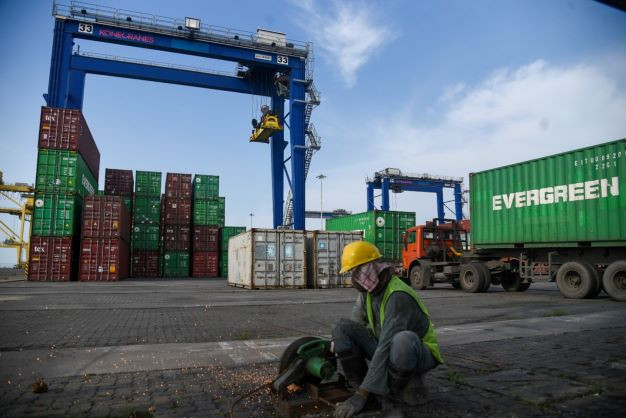How Southeast Asia can stay in the global trade sweet spot
ASEAN has one of the largest digitally enabled populations in the world, with an internet penetration rate of more than 75 percent among its 670 million people.
Change Size
 Delivered: Goods are unloaded from a foreign entity cargo vessel at the Jakarta International Container Terminal of Tanjung Priok Port in North Jakarta on March 24, 2024. (Antara/Muhammad Adimaja)
Delivered: Goods are unloaded from a foreign entity cargo vessel at the Jakarta International Container Terminal of Tanjung Priok Port in North Jakarta on March 24, 2024. (Antara/Muhammad Adimaja)
T
hey say a supply chain is only as strong as its weakest link. That certainly proved to be the case during C0VID-19, when local lockdowns had global implications on the movement of goods.
Southeast Asia has been a major beneficiary of the resulting push for supply-chain diversification, but the risk of another disruption is never far away.
Take the recent tensions in the Red Sea. Between December 2023 and January 2024, the cost of shipping a container from Vietnam to Hamburg, Germany more than tripled. The knock-on effects include longer delivery times, lengthier working capital cycles, and higher funding costs.
The Red Sea crisis is only the latest reminder that businesses need to strengthen their supply-chain networks to withstand future shocks. Against this backdrop, Southeast Asia has a historic opportunity to deepen their importance in the latest phase of globalization.
The pandemic laid bare the inherent vulnerabilities in international supply chains that had been building for years. The relentless drive for ever-lower costs spread out suppliers in finely tuned “just-in-time” networks that, while lean, provided inadequate transparency and agility to adapt to shocks.
Without inventory, factories grounded to a halt; companies struggled to meet orders after flights were canceled and ships were delayed; and the inability of paper-based documents to reflect rapidly changing circumstances prevented the release of goods and froze trade finance.
Growing geopolitical tensions between China and the United States, the war in Ukraine and the fallout from the conflict in the Middle East have only underscored the need for greater resilience in international supply chains.
One way to achieve this which has worked in ASEAN’s favor is to build more diverse regional networks that balance just-in-time and just-in-case. Diversifying production across markets reduces the impact of any localized breakdown. And with a neutral role in global trade disputes, ASEAN offers an attractive investment destination and production base.
According to HSBC Global Research, ASEAN offers a large consumer base, and Southeast Asia is set to become the world’s fourth-largest economy by 2030.
There is also a push to rationalize supply networks and source more key components from neighboring countries, rather than the other side of the planet.
Businesses in the Asia-Pacific region are especially keen to reduce complexity. An HSBC survey from late 2022 found that more than two-thirds planned to reduce the number of companies in their supply chains, preferring to build more strategic ties with fewer suppliers.
Companies with shorter supply chains can better understand and anticipate the risks in business relationships, whether around sanctions, environmental or social concerns. It's why Australia, for one, is investing billions of dollars in promoting ties with Southeast Asia, including a US$1.3 billion fund to support trade and investment.
Digitalization provides a strong foundation for ASEAN companies to build on their efforts to enhance resilience. ASEAN has one of the largest digitally enabled populations in the world, with an internet penetration rate of more than 75 percent among its 670 million people.
Revenue in Southeast Asia from online commerce passed $100 billion in 2023 – an eightfold jump in eight years. Meanwhile, in Southeast Asia’s largest economy, Indonesia, its digital economy is expected to reach $360 billion in value by 2030.
The region’s expanding network of instant payments helps businesses avoid lengthy delays in cross-border transfers and reduce foreign exchange risks. More than three-quarters of businesses across Asia expect to increase digitalization across their supply chains, HSBC research shows.
Digitalizing transactions within their supply chains gives companies a wealth of data that can be used to improve access to trade finance, inform decision-making, optimize cash management or identify efficiency gains. It also provides the accountability that multinational companies expect from their business partners. A digital trade finance solution can also help coordinate supply chain relationships by paying suppliers directly and keeping everyone updated on production and cash flow.
For digitalization to work, there needs to be a more united effort involving transport and logistics groups, supply chain and inventory managers, as well as banks and insurers, all working in tune with governments and regulators.
How these tactics and technologies come together will significantly impact ASEAN’s importance in global trade networks and the region’s economic growth trajectory. Whenever the next trade shock hits, nobody wants to be the weakest link.
***
The writer is president director of PT Bank HSBC Indonesia.










